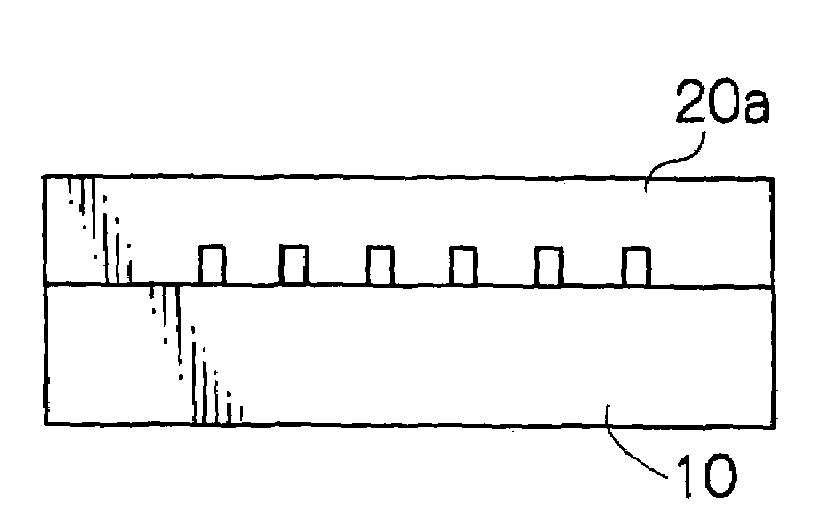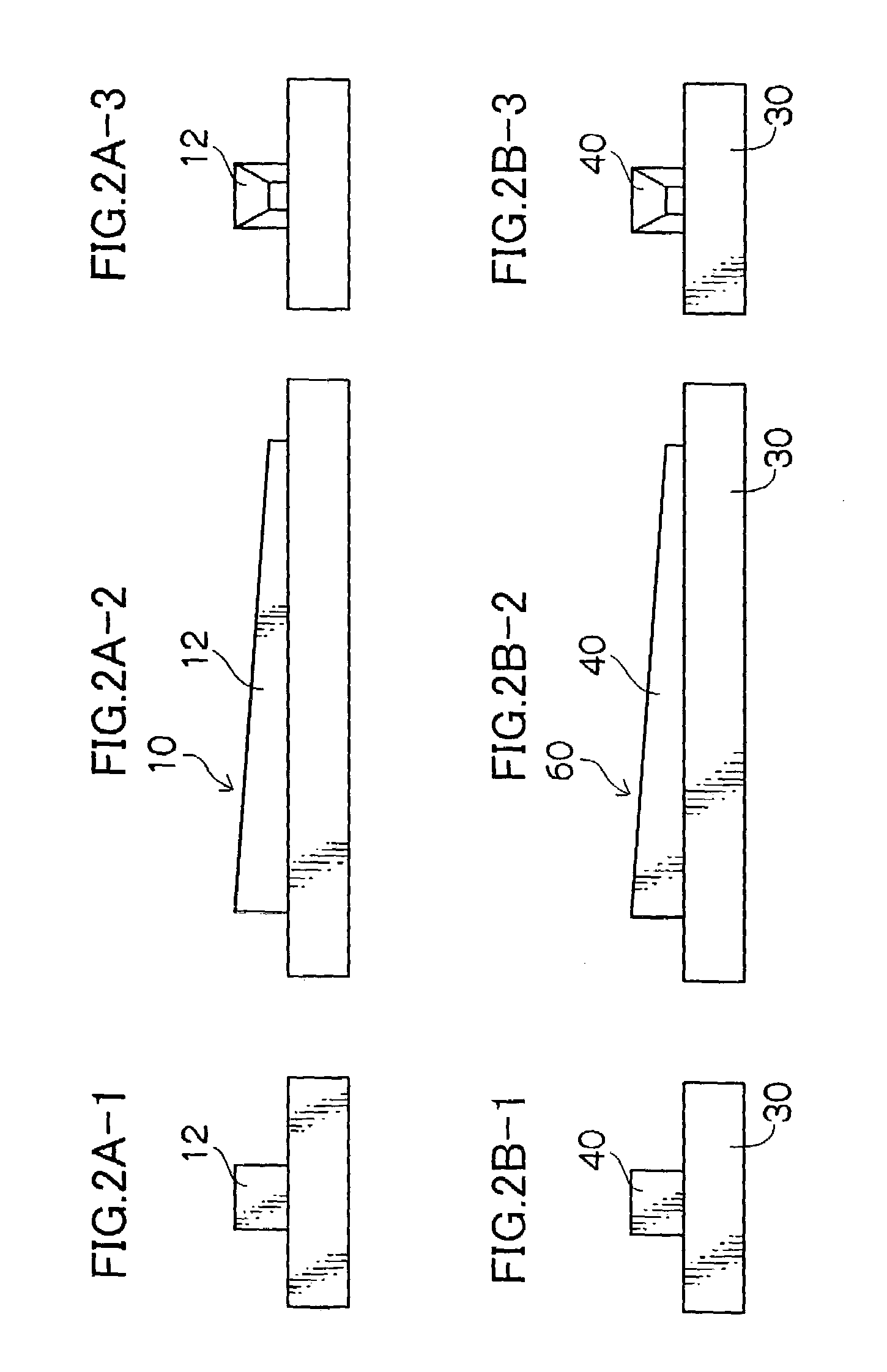Process for producing polymer optical waveguide
a polymer and optical waveguide technology, applied in the field of flexible polymer optical waveguides, can solve the problems of poor precision of the resultant core diameter, increased costs, and insufficient refraction index difference, and achieve the effects of reducing the loss of transmission, and reducing the cost of production
- Summary
- Abstract
- Description
- Claims
- Application Information
AI Technical Summary
Benefits of technology
Problems solved by technology
Method used
Image
Examples
example 1
[0120]A quartz glass substrate was subjected to an RIE process to produce a master template having four optical waveguide convex portions, as illustrated in FIGS. 2A-1 to 2A-3. The length of the optical waveguide convex portion was 50 mm, and a sectional shape thereof was a square. A side length of the square of one end face of the convex portion was 80 μm, and another side length of the square of the other end face was 20 μm. The convex portion had a sectional area continuously changing from one end face to the other end face.
[0121]Then, a releasing agent was coated onto this master template, followed by filling a heat-curable dimethylsiloxane resin (SYLGARD 184, manufactured by Dow Corning Asia Co.) thereinto. The filled resin was cured by heating at 120° C. for 30 minutes. Thereafter, the cured resin was peeled to obtain a template (thickness: 3 mm) that had concave portions each having a continuously changing sectional area. Then, both ends of the template was cut to form input ...
example 2
[0125]A master template and a mold were prepared in the same manner as in Example 1, except that the length of optical waveguide convex portions configured in the master template was 50 mm, and a sectional shape thereof (a square) had a side length at one end face of 72 μm and another side length at the other end face of 60 μm.
[0126]This mold was brought close contact with a film (Arton film, manufactured by JSR Corp., refractive index: 1.510) having a larger size than the size of the mold, with a thickness being 188 μm.
[0127]GI type optical fibers each having diameters of 62.5 μm and 50 μm were inserted, by about 1 mm, into a hole made between the mold and the film. Then, several droplets of an UV-curable resin (manufactured by NTT-AT Co.) having a viscosity of 300 mPa·s were supplied into one end of the mold (the end having a larger sectional area of the hole), whereupon the resin was introduced, by capillarity, from the gap between the hole and the optical fibers.
[0128]Subsequent...
PUM
| Property | Measurement | Unit |
|---|---|---|
| surface energy | aaaaa | aaaaa |
| surface roughness | aaaaa | aaaaa |
| thickness | aaaaa | aaaaa |
Abstract
Description
Claims
Application Information
 Login to View More
Login to View More - R&D
- Intellectual Property
- Life Sciences
- Materials
- Tech Scout
- Unparalleled Data Quality
- Higher Quality Content
- 60% Fewer Hallucinations
Browse by: Latest US Patents, China's latest patents, Technical Efficacy Thesaurus, Application Domain, Technology Topic, Popular Technical Reports.
© 2025 PatSnap. All rights reserved.Legal|Privacy policy|Modern Slavery Act Transparency Statement|Sitemap|About US| Contact US: help@patsnap.com



